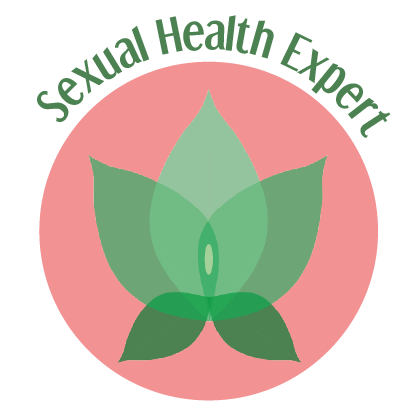Pubic Lice: What You Need to Know
What Are Pubic Lice?
Pubic lice, also known as "crabs," are tiny insects that live in the hair around your genitals. They feed on blood and can cause itching and discomfort. It’s important to know a bit about them so you can take care of yourself and others.
What is the difference between Lice, Fleas and Nits!
Pubic lice, also known as crab lice, are tiny parasites that infect the hair in the pubic area and can occasionally be found in other body hair. They cause itching and are typically transmitted through sexual contact.
Head lice are similar parasites but primarily infest the hair on the scalp. They lay eggs, known as nits, which stick firmly to the hair shafts and can cause itchiness and discomfort. Head lice are most commonly spread among children through close head-to-head contact.
Body lice are a different breed, primarily residing in clothing and only moving to the skin to feed. They are often associated with poor hygiene and can cause skin infections due to scratching.
Fleas are small, jumping insects that primarily infest animals, such as cats and dogs, although they can also bite humans. Unlike lice, fleas are not specific to hair and do not lay eggs in human hair; instead, they produce eggs that fall into the bedding or environment.
Nits refer specifically to the eggs laid by head lice. They appear as tiny, white or yellowish specks attached to the hair, often mistaken for dandruff yet distinctly more difficult to remove.
How Do You Get Pubic Lice?
You can get pubic lice through close contact with someone who has them. This often happens during sexual activity, but you can also catch them from sharing bedding, towels, or clothing with an infected person. They cannot fly or jump, so they need direct contact to spread.
Symptoms of Pubic Lice
The main symptom of pubic lice is itching, which comes from the bites they give when they feed on your blood. Other signs include finding small white or yellow eggs (nits) in the hair or noticing the lice themselves, which are about the size of a pinhead. You might also see irritation or red spots in the area where the lice are.
How to Treat Pubic Lice
When dealing with pubic lice, it's important to administer proper treatment along with maintaining strict hygiene to ensure effective elimination. Here’s how to treat pubic lice effectively:
Treatment Options:
Medicated Lotions and Creams: Over-the-counter treatments that contain pyrethrins or permethrin are commonly recommended for treating pubic lice. Follow the instructions carefully as you may have to leave the treatment on for many hours. Some effective products include:
Permethrin
Malathion
Apply the lotion directly to the affected area, usually after a shower when the hair is clean and damp. Allow it to sit for the recommended time before rinsing.
Click here to get the latest treatment products
Follow-Up Treatment
Reapply Treatment: After the initial treatment, it's vital to apply the lotion again 7 days later. This second application is crucial for killing any lice that may have hatched since the first treatment, as the previously applied treatment only targets live lice, not their eggs.
Additional Steps to Ensure Effectiveness
Launder Clothing: Wash all clothing that has been worn in the last couple of days, including underwear and pajamas. Use hot water (at least 130°F or 54°C) and a hot dryer cycle to ensure all lice and eggs are killed.
Bedding and Towels: Wash your bedding and towels in hot water to eliminate any traces of lice. This includes your sheets, pillowcases, and any towels used recently.
Non-Washable Items: For any items that cannot be washed, such as some upholstery or soft toys, seal them in a plastic bag for at least two weeks. This will suffocate any remaining lice.
Avoid Sharing: To minimize the risk of spreading lice, refrain from sharing clothing, towels, and bedding until treatment is complete, and you are confident the lice have been eliminated.
Personal Hygiene: Maintaining good personal hygiene is crucial. Regular bathing and grooming habits can help decrease the chances of reinfestation.
Treat All Household Contacts: Ensure that all household contacts are treated simultaneously. This collective approach is essential in battling infestations and preventing lice from reappearing.
By adhering to these guidelines and maintaining a proactive approach, you can effectively treat pubic lice and safeguard your health. If symptoms persist after following these steps, consult your healthcare provider for further advice.
How to Prevent Pubic Lice
To reduce your chances of getting pubic lice, try to avoid close contact with someone known to have them. It’s good practice to use personal items like towels and underwear by yourself and not share them with others. Maintaining good hygiene can also help keep you and your surroundings clean.
Talking About Pubic Lice
It might feel awkward to talk about pubic lice, but it’s important. If you think you might have them, let your partner and household contacts know, so they can get treatment at the same time. Remember, getting pubic lice is common, and it doesn’t mean you did anything wrong.
When to See a Doctor
If you have intense itching, see small bugs or eggs, or if the treatment doesn’t seem to work, make an appointment with your doctor. They can help ensure that you are treated correctly and discuss any concerns you have.
Conclusion
Pubic lice are little creatures that can cause discomfort, but they are treatable. By knowing how they spread, recognizing their symptoms, and following proper treatment guidelines, you can get rid of them and feel comfortable again. Always remember, it’s okay to seek help and talk about these things!
